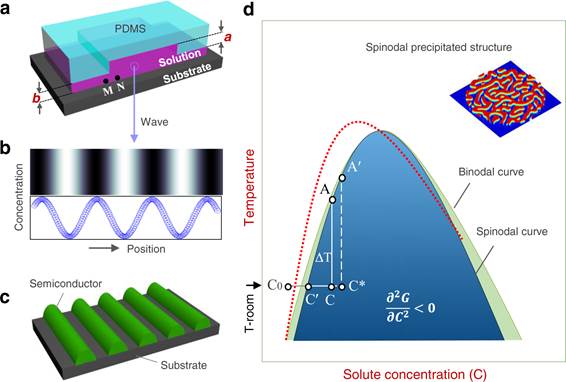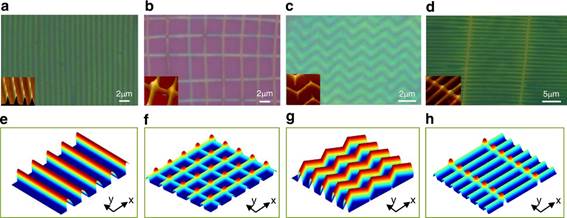In 1952, well-known mathematician Alan Turing proposed a chemical reaction-diffusion mechanism to explain the formation of biological patterns and the regular patterns generated through the mechanism are called Turing patterns. Recently, a research team from College of New Materials and New Energies, Shenzhen Technology University (SZTU), found that Turing patterns can also be generated without a chemical reaction process.

Schematic illustration of proposed concentration-wave formation process [Photo/https://www.nature.com/articles/s41467-022-35162-z]
The work was published in Nature Communication titled “Turing patterns with high-resolution formed without chemical reaction in thin-film solution of organic semiconductors”. Xiang Zezhong, postgraduate from College of New Materials and New Energies, is the first author and Professor Li Shunpu the corresponding author. SZTU is the first affiliation. The article can be found at: https://www.nature.com/articles/s41467-022-35162-z.

Optical/AFM images (insets) of the self-assembled microstructures and the results of simulations with harmonic waves [Photo/https://www.nature.com/articles/s41467-022-35162-z]
In this work, researchers found that Turing patterns can also be generated in an uphill-diffusion system without a chemical reaction process through in-situ and ex-situ observation. In a thin solution film sandwiched between two solid surfaces, the convection can be suppressed which is beneficial to drive the system far away from equilibrium. When the instability point is reached and a process called spinodal decomposition happens, regular concentration waves form. When the secondary instability point is reached, regular patterns (square-grid, zig-zag, fence-like patterns, etc.) will be generated. The experimental system they used forms a simple dissipative structure which could generate patterns in natural conditions without artificial involvement and the orderly and various patterns can be found in biosystem. The research may pave a new way in developing self-assembling techniques of micro/nano structured materials and provide a new perspective for the understanding of biomorphic structures.
Drafted by Daisy(姚琦)/ International Cooperation & Student Affairs Office
Revised by International Cooperation & Student Affairs Office
Edited by International Cooperation & Student Affairs Office
